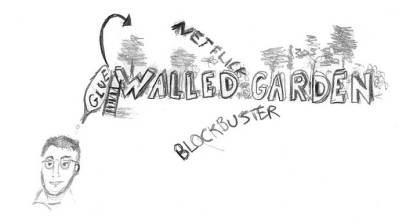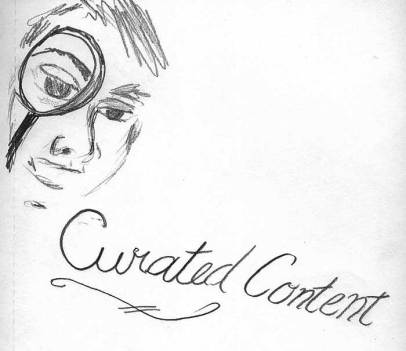Besides the stagecraft involved with giving a presentation, many people struggle with the visual aspects, such as creating the ubiquitous PowerPoint or Keynote slideshow, or figuring how to use a whiteboard or an easel pad with marker pens. The dilemma often starts from not having a clear focus on 1) a structure to make the presentation and/or 2) Clear, definable objectives, key ideas and take-aways to anchor the linear progression or the storytelling aspects of your presentation. Simply put: Do you have an overarching point to make that you can write down in one sentence? Does you presentation have a beginning, a middle, and an end, with major points or milestones that carry the story along its way? With those in hand, you may now ask yourself: How do I tell that story visually, with impact?
Here is a collection of books and web resources to assist you with formulating and executing a presentation, with a heavy focus on STORYTELLING. When I emphasize this word I hope it sounds like gathering the tribespeople around the fire and regaling them with myths and legends. That’s the image I use when I plan on making a memorable presentation. The best presentations have a magical quality to them, where the presenter imparts something of value, something memorable, perhaps through a story of dangers overcome, or one of transformation. The story might warn of imminent doom or give an example of heroic achievement to be emulated. In the more mundane variety of what’s forced into the “presentation” category, if you must present the findings of research in the form of a report, plan a brainstorming session or a Q&A/discussion instead: email the attendees an agenda and a PDF version of your research paper or the thoroughly-researched facts and figures that you have turned into a neatly-organized document BEFORE the presentation. Let everyone digest the information at their own pace, and then you can turn a potentially mind-numbing experience into a participatory event, getting questions answered and your findings clearly revealed. Wouldn’t you prefer that over watching people look at their watches instead of the clever slide you made with 4 charts and 7 bulletpoints of text?
To see a sequential slide-based presentation with great visual impact, look at this video of Al Gore’s first version of An Inconvenient Truth. This is not the documentary film version, but a video of him on stage presenting the slide presentation he started with in 2004. Bear with the opening introductory speeches and his “ums” and “errs”. It’s worth watching for the strength of his clear, purpose-driven storytelling combined with simple yet powerful visual images.
Next, watch T.Boone Pickens give a whiteboard presentation, offering his solution to U.S. dependence on foreign oil. His great strength starts from his clear objective, which is then enhanced by writing down his key points on an old-fashioned (analog) whiteboard as he speaks. To top it off, he adds a few maps for additional visual impact. It’s simple, and it works!
The rest of the list below will help you, whether left-brained or right-brained, in creating better presentations and better reports. But there are two key ideas I’d like to leave you with before you attack the list:
1) If you are bored with your story, your audience will be bored as well.
2) To avoid boredom, as you finish each slide, or section of your presentation, make sure you can answer the question “SO WHAT?” What is the point of the slide? State the objective (the “SO WHAT?”) clearly, revise the words/images to support the objective, or get rid of the slide.
And now, to the list. Let me know what you learn or give me suggestions to add and share in my training:
Concept development:
The Back of the Napkin: Solving Problems and Selling Ideas with Pictures , Dan Roam, and the Web site: www.thebackofthenapkin.com
, Dan Roam, and the Web site: www.thebackofthenapkin.com
slide:ology: The Art and Science of Creating Great Presentations , Nancy Duarte – and the website: www.slideology.com
, Nancy Duarte – and the website: www.slideology.com
– My highest recommendation, as this is a textbook, a workbook, a resource, and she is a gifted presenter in print AND in person! (I will repeat this recommendation under the PowerPoint section, as it deserves repetition)
Beyond Bullet Points , Cliff Atkinson (use the edition for PowerPoint 2007) and the web site: www.beyondbulletpoints.com – This book has actually helped me in film projects, as his approach comes directly from concepts of script development for film. Another resource that will be repeated below.
, Cliff Atkinson (use the edition for PowerPoint 2007) and the web site: www.beyondbulletpoints.com – This book has actually helped me in film projects, as his approach comes directly from concepts of script development for film. Another resource that will be repeated below.
Making Comics: Storytelling Secrets of Comics, Manga and Graphic Novels , Scott McCloud – Comics and graphic novels have to tell their stories visually–this comic book tells you how it’s done, and you can apply the same ideas to your presentation skills.
, Scott McCloud – Comics and graphic novels have to tell their stories visually–this comic book tells you how it’s done, and you can apply the same ideas to your presentation skills.
A Technique for Producing Ideas (Advertising Age Classics Library) , James Webb Young (written in the 1940’s, a little book with an old-fashioned but viable approach)
, James Webb Young (written in the 1940’s, a little book with an old-fashioned but viable approach)
Mind mapping:
Brainstorm in a visual way, either alone or with others:
http://www.cogniview.com/convert-pdf-to-excel/post/using-mind-maps-for-creativity-note-taking-and-productivity/
http://cmap.ihmc.us/conceptmap.html (free, share mind maps with others)
http://www.thebrain.com/ (free and for-pay versions, mind maps/outlining)
Visualizing data:
Methods to display data or business information visually–and that does include words and numbers:
Anything/Everything written by Edward Tufte (www.edwardtufte.com):
The Visual Display of Quantitative Information, 2nd edition
Envisioning Information
Visual Explanations: Images and Quantities, Evidence and Narrative
Beautiful Evidence
Show Me the Numbers: Designing Tables and Graphs to Enlighten , Stephen Few (a workbook for those who want to use Excel/Powerpoint charting to better effect)
, Stephen Few (a workbook for those who want to use Excel/Powerpoint charting to better effect)
http://www.swivel.com (Great examples of good charting design, a new online service for big number sets)
Gallery of Data Visualization http://www.math.yorku.ca/SCS/Gallery/
Using Powerpoint/Keynote to tell your story visually:
slide:ology: The Art and Science of Creating Great Presentations , Nancy Duarte – and the website: www.slideology.com
, Nancy Duarte – and the website: www.slideology.com
Presentation Zen: Simple Ideas on Presentation Design and Delivery (Voices That Matter), Garr Reynolds – and the website: www.presentationzen.com
Beyond Bullet Points , Cliff Atkinson (use the edition for Powerpoint 2007) and the web site: www.beyondbulletpoints.com
, Cliff Atkinson (use the edition for Powerpoint 2007) and the web site: www.beyondbulletpoints.com
Other resources:
graphics and images – starting places for ideas
images.google.com
www.symbols.net
istockphoto.com
Optical illusions: http://villageofjoy.com/incredible-optical-illusions-part-i/
Three more books – sequential storytelling and acquiring simple but effective design skills
Understanding Comics: The Invisible Art , Scott McCloud (why we like comics and sequential art)
, Scott McCloud (why we like comics and sequential art)
The Cartoonist’s Workbook Drawing, Writing Gags, Selling , Robin Hall (if you’re tired of drawing stick figures, try his “keyhole” character drawing)
, Robin Hall (if you’re tired of drawing stick figures, try his “keyhole” character drawing)
Non-Designer’s Design Book, The (3rd Edition) (Non Designer’s Design Book) , Robin Williams (Begins with print, but general principles apply for all graphics)
, Robin Williams (Begins with print, but general principles apply for all graphics)
A special book to help you think about everything above:
The Laws of Simplicity (Simplicity: Design, Technology, Business, Life) by John Maeda
by John Maeda
A final note: FLASH, Whiteboard software, Webinars, others:
Collaborative and interactive presentations other than panel discussions are in their infancy. There are programs online that allow people to display slide shows online, www.slideshare.net coming first to mind, but I have also used some web-based whiteboard programs to give presentations online, creating hybrids between slideshows and white boards. www.scriblink.com, www.skrbl.com, www.groupboard.com all offer free simple collaborative products to try, there are commecial ones as well. Flash can be a wonderful tool to make great presentations, but has a high-pain learning curve that daunts most from putting it to use–a great shame as it allows for non-linear, non-sequential storytelling to happen when used to its fullest extent. Perhaps we’ll see better tools for that to happen soon. I’ll talk about the non-sequential story as opposed to the sequential story in another post.
Finally, there is the Webinar, a really popular interactive tool for presenters to use the web to give a talk and participants to interact both with the presenter and each other. Again, most of these services follow the model of a host talking while giving a sequential slideshow online, but we’ll see more interaction and better presentations with increased bandwidth and more online interactive gadgetry over time.
I hope you will try many of these tools and resources to become a better storyteller and learn how to increase the visual impact of your presentations. Show me your stories after you’ve tried some of these resources!
Filed under: Presentation Skills, Uncategorized, Visual Expression, Visual Problem-Solving, Al Gore, brainstorming, business graphics, collaboration, data visualization, design, graphics, Keynote, mind mapping, Powerpoint, presentations, reports, Storytelling, T Boone Pickens, video, whiteboard


![Reblog this post [with Zemanta]](https://i0.wp.com/img.zemanta.com/reblog_e.png)




